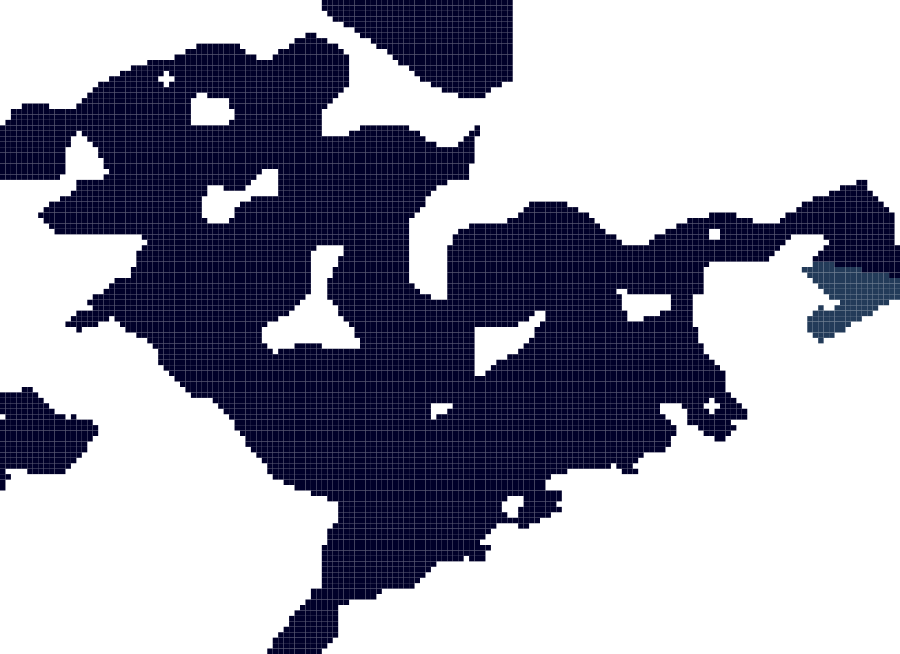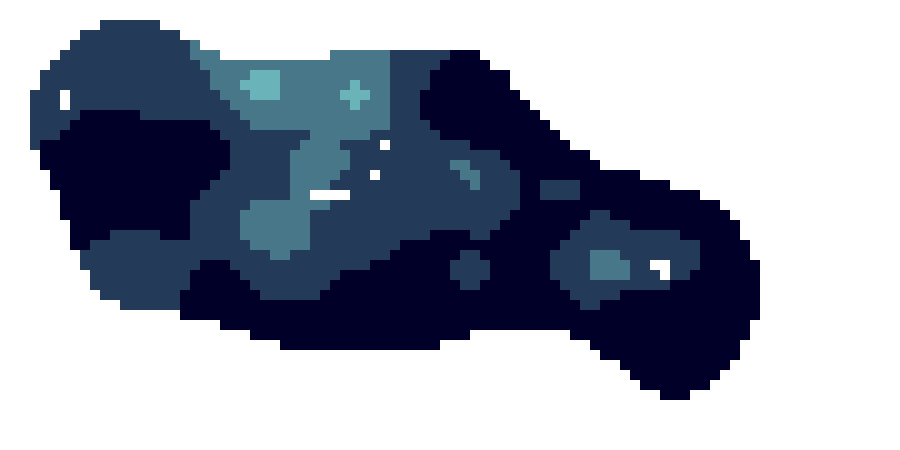Species distribution
Type of resources
Available actions
Topics
Keywords
Contact for the resource
Provided by
Years
Formats
Representation types
Update frequencies
status
Scale 1:
-

These grid data were derived from National Parks and Wildlife Service cetacean surveys within the Irish MSFD area and the EEA-10km GRID. The grid shows the current distribution of Grey seal (Halichoreus grypus) in Irish coastal and marine waters. The data were collected for the purposes of 2019 reporting under Article 17 of the EU Habitats Directive.
-

This dataproduct consists of a set of gridded map layers showing the average abundance of different species of species groups for different time windows (seasonal, annual or multi-annual as appropriate) using spatial modelling. They cover a wide taxonomic range, from the smallest organisms (e.g. diatoms, flagellates) to the largest ones (e.g. fish, birds, reptiles, mammals), encompassing all trophic levels.
-

This dataproduct consists of a set of gridded map layers showing the average abundance of different species of species groups for different time windows (seasonal, annual or multi-annual as appropriate) using spatial modelling. They cover a wide taxonomic range, from the smallest organisms (e.g. diatoms, flagellates) to the largest ones (e.g. fish, birds, reptiles, mammals), encompassing all trophic levels.
-

This dataproduct consists of a set of gridded map layers showing the average abundance of different species of species groups for different time windows (seasonal, annual or multi-annual as appropriate) using spatial modelling. They cover a wide taxonomic range, from the smallest organisms (e.g. diatoms, flagellates) to the largest ones (e.g. fish, birds, reptiles, mammals), encompassing all trophic levels.
-
A detailed distribution of true crabs (Brachyura) in the North-East Atlantic.
-
Intertidal species effort based search undertaken by students (16+) and volunteer groups with support from an ecologist. During the twenty minute timed species search surveyors look for 22 species, 4 non native and 18 climate change indicator species within 1 of 3 habitats rockpools; boulders, crevices and overhangs or open rock. Abundance is recorded using a simplified version of SACFORN.
-
The dataset include Finnish zooplankton monitoring data from the Baltic Sea. The Finnish zooplankton monitoring program started in 1979 and is still ongoing. The sampling has normally taken place in late summer (August), but since 2014 sampling is also carried out in early summer (May-June).The zooplankton monitoring was performed by Finnish Institute of Marine Research until 2008, thereafter the Finnish Environment Institute is responsible for the monitoring program. Samples are taken using a WP-2 net (normally 2550 cm2 opening and 100 um mesh size). The monitoring follows the HELCOM COMBINE guidelines, but subsampling is done using Folsom splitter. The dataset is also accessible through the NOAA COPEPOD database.
-
The POHJE database includes data on benthic macrofauna, covering the Finnish coastal areas as well as the offshore areas of the Baltic Sea. The quantitative data mainly stem from the Finnish national monitoring program and statutory monitoring programs, but also data from surveys and research projects are included. In total the database contain aproximately 100 000 quantitative records including developmental stages, with a time span from 1965 to present. The database is regularly maintained and data is added continuously.
-
Phytobenthos community data, a large portion of the data held are monitoring data submitted for the OSPAR CEMP and HELCOM COMBINE monitoring programmes and therefore follow specific monitoring programme guidelines.
-
The KPLANK database includes data on phytoplankton, covering the Finnish coastal areas as well as the offshore areas of the Baltic Sea. The quantitative data mainly stem from the Finnish national monitoring program and statutory monitoring programs. In total the database contain approximately 240 000 quantitative records including size classes. The data span from 1937 to present. The database is regularly maintained and data is added continuously.
 EMODnet Product Catalogue
EMODnet Product Catalogue